This is a follow up post to my test of the Firefly DSC-2000 sensor cleaner. In that post, we saw that the Firefly significantly diminished the spots on the sensor, but many spots remained. In this post, I show how the Firefly is complemented by the Lenspen SensorKlear. The combination is very easy to use and is very effective.
TEST 1: NIKON D7000
Here is a baseline shot of the Nikon D7000, a camera with a reputation for being prone to dust spots (some say oil spots, although I'm not convinced that the spots are oil). This was at f/45.
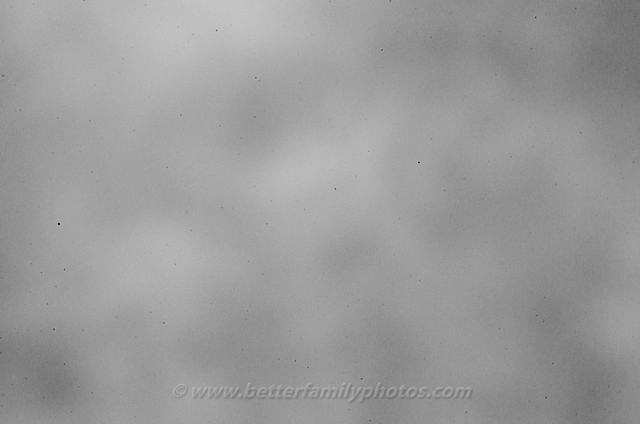
I then cleaned the sensor with the Firefly:
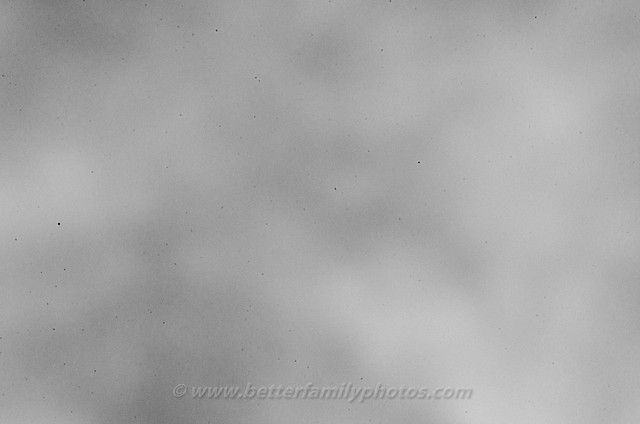
There is not a lot of difference compared to the baseline shot. However, please recall that I had just recently cleaned the D7000 with the Firefly (see this post), therefore most of the spots that could have been removed by the Firefly were already gone. This time, I'd like to show the additional effect of the LensPen.
Looking at the sensor I could not see the spots even with the lighted loupe. Because the spots were too small to be seen, I just rubbed the Lenspen lightly several times across the sensor surface (actually the AA filter) to try to remove the spots. I was trying to rely on the friction of the repeated rubbing rather than pressure (I am concerned that using too much pressure can damage the sensor). Here is the result.
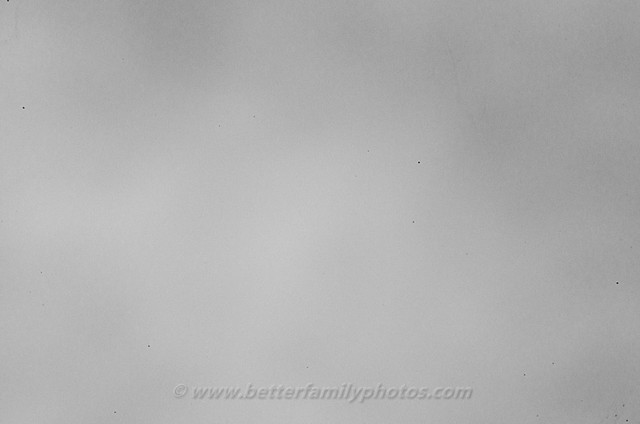
The LensPen was able to remove most of the remaining spots.
TEST 2: FUJI S5 PRO
I did a similar test with the Fuji S5. Here is how the S5 looked after cleaning with the Firefly (f/45).

You can see there are many tiny spots around the edges of the frame. I rubbed the LensPen over the sensor several times and here is how it looks now:

Most of the small spots around the corner were removed by the LensPen, although there are new, larger spots, which I think are spots that came from the LensPen bits that came off. I did another sweep with the LensPen and some more blowing with the Firefly. Here is the result at f/45.

Almost all of the spots are gone, and the few that remain are small.
TEST 3: NIKON D600
Same test, with the D600 with approximately 10,300 shutter count. Here is how it looks before cleaning (was cleaned by a blower several times but never wet cleaned).
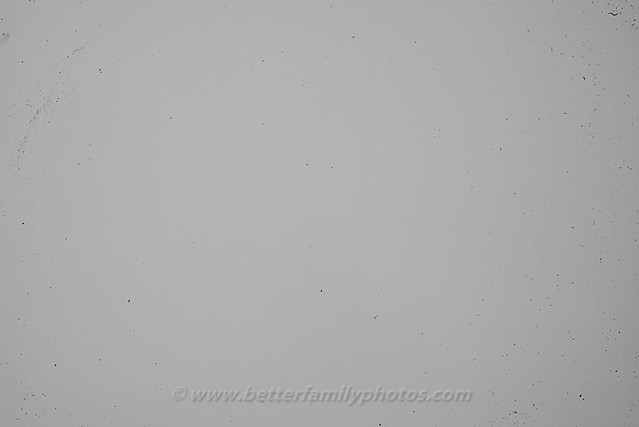
I used the Firefly first with the mirror down, then with the mirror up (using Mup), then on the sensor surface. I then used the Lenspen to sweep the remaining dust. Then again with the Firefly to get rid of debris introduced by the LensPen. After about 3 attempts at cleaning with the Firefly and LensPen here is how it looks:
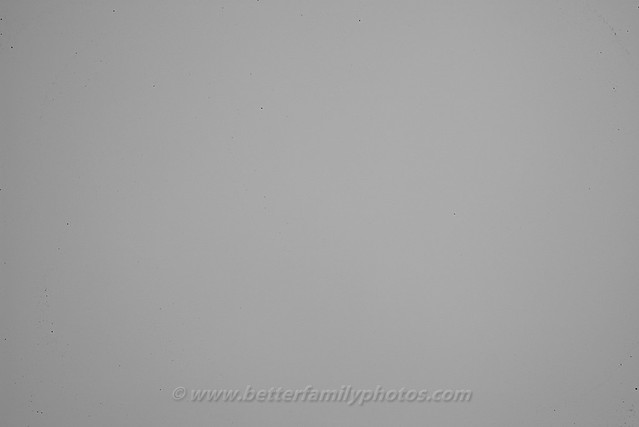
OBSERVATIONS
- The Firefly is effective at reducing but not eliminating dust spots. It is more effective than a blower alone, and is less likely to cause accidental damage to the sensor.
- The LensPen is effective at removing the tiniest spots but sometimes introduces new spots of its own. These additional spots can be removed through the Firefly.
- The Firefly and Lenspen combination performs very well and is a lot easier to use than the wet cleaning method. However, if I were on a budget I would choose just the LensPen and a Giottos blower (large).
- The disadvantage of the LensPen is that it requires contact with the sensor, and therefore in theory voids your sensor's warranty.
That's why I haven't used it with my D600 yet. But when the warranty is over, I know what to use for cleaning it. UPDATE: D600 results shown. - For cameras with sensor-based stabilization please check with the manufacturer before using the LensPen or any other contact-based sensor-cleaning method.
Welcome back Mic, really glad to see you posting again, I hope all is ok now.
ReplyDeleteWow, I am scared to stop-down my lens and take test shots like yours, if I get a shot like your first one, I am afraid I might get a heart attack. I have never cleaned any of my sensors beyond the Giottos rocket blower, my 5D2 had four spots that appeared when I was shooting macro at f/16, but I was never able to get rid of them using the blower alone.
I also haven't cleaned the OMD yet, I hope I never see spots. I take a lot of care when changing lenses, I don't change them in open environment, I face the camera down and have the other lens ready to minimize the time the sensor might get some debris.
One thing to consider, the OMD has IBIS, this means that the sensor moves to compensate for vibration, and I am not sure that touching the sensor physically will not destroy the IS mechanism.
Thanks Mohammad! I'm almost back to normal and I'm on my way to full recovery, with God's blessing.
DeleteThat's a good point about sensor-based stabilization. I think that is a genuine concern and I'll add a note about that. Thanks for pointing that out.
As for checking for spots, personally if my shots don't require stopping down then I would not worry about it. Life's too short for needless stress, I say! :D
Incidentally, IIRC Olympus is the only manufacturer that has an effective built-in sensor cleaning function (the cleaning function on my Nikons don't seem to have any effect at all).
Best regards,
Mic
OMD dose not have a mirror. I think without a moving mirror mechanism, there are less wear particles generated and end up landing on the sensor. One major advantage that MILC has over the SLR, and they are quieter too.
ReplyDeleteHi Mic, may I ask how is your D600 regarding oil/dust issue? Was it really a big concern? Or this issue was just overblown. I don't see it on my D600 except I go shoot a blank wall at f/22. I'm thinking of getting Copperhill Megakit. It's a little bit on the pricey side but you get 100 quick swipes so it's cheaper than other options in the long run, I think. Also since you get all 3 methods, air blow, dry and wet clean. I haven't cleaned my D7000 and i do see some spots on it already shooting at f/8 above.
ReplyDelete